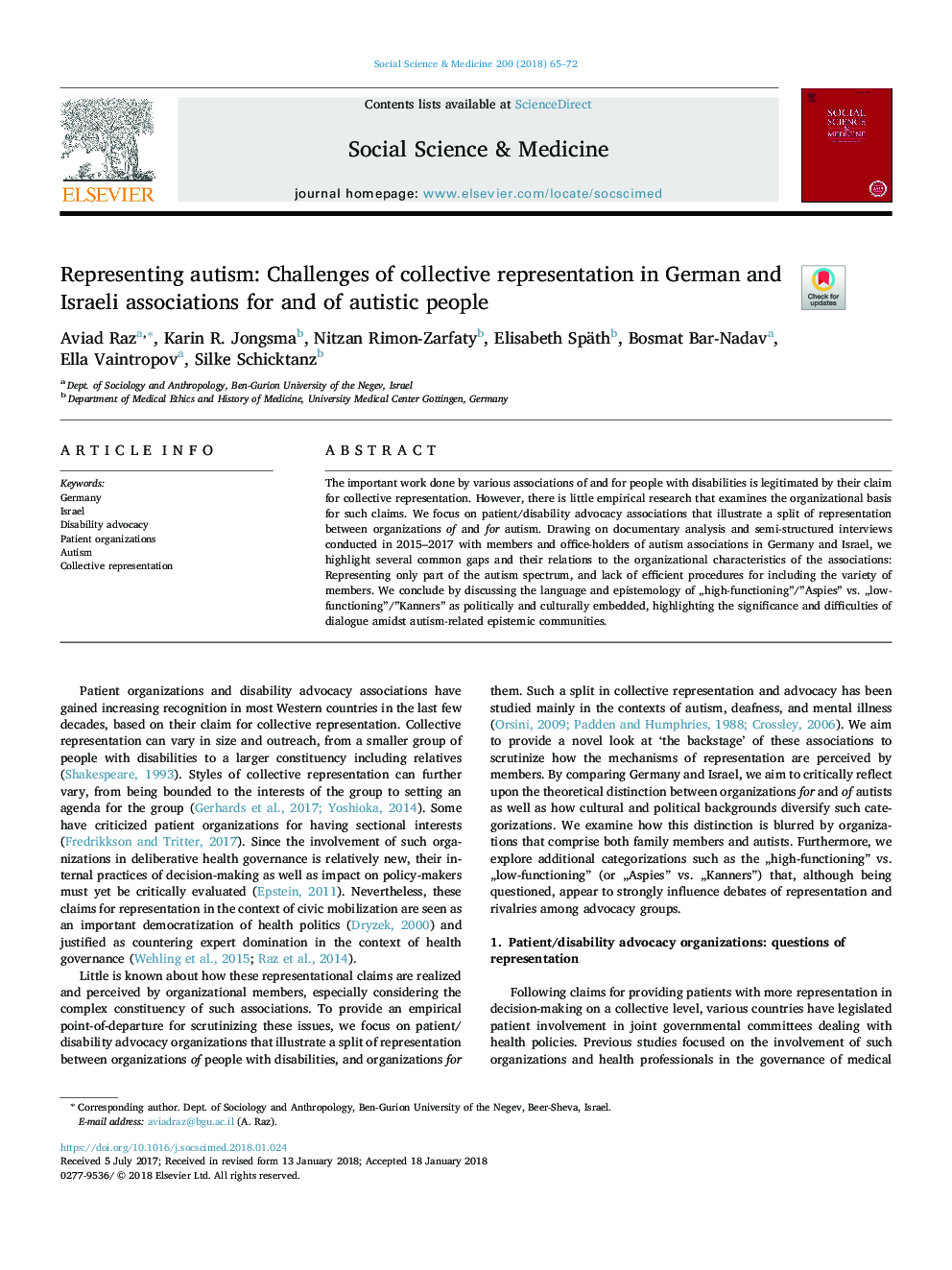| Article ID | Journal | Published Year | Pages | File Type |
|---|---|---|---|---|
| 7328381 | Social Science & Medicine | 2018 | 8 Pages |
Abstract
The important work done by various associations of and for people with disabilities is legitimated by their claim for collective representation. However, there is little empirical research that examines the organizational basis for such claims. We focus on patient/disability advocacy associations that illustrate a split of representation between organizations of and for autism. Drawing on documentary analysis and semi-structured interviews conducted in 2015-2017 with members and office-holders of autism associations in Germany and Israel, we highlight several common gaps and their relations to the organizational characteristics of the associations: Representing only part of the autism spectrum, and lack of efficient procedures for including the variety of members. We conclude by discussing the language and epistemology of âhigh-functioning”/”Aspies” vs. âlow-functioning”/”Kanners” as politically and culturally embedded, highlighting the significance and difficulties of dialogue amidst autism-related epistemic communities.
Related Topics
Health Sciences
Medicine and Dentistry
Public Health and Health Policy
Authors
Aviad Raz, Karin R. Jongsma, Nitzan Rimon-Zarfaty, Elisabeth Späth, Bosmat Bar-Nadav, Ella Vaintropov, Silke Schicktanz,
